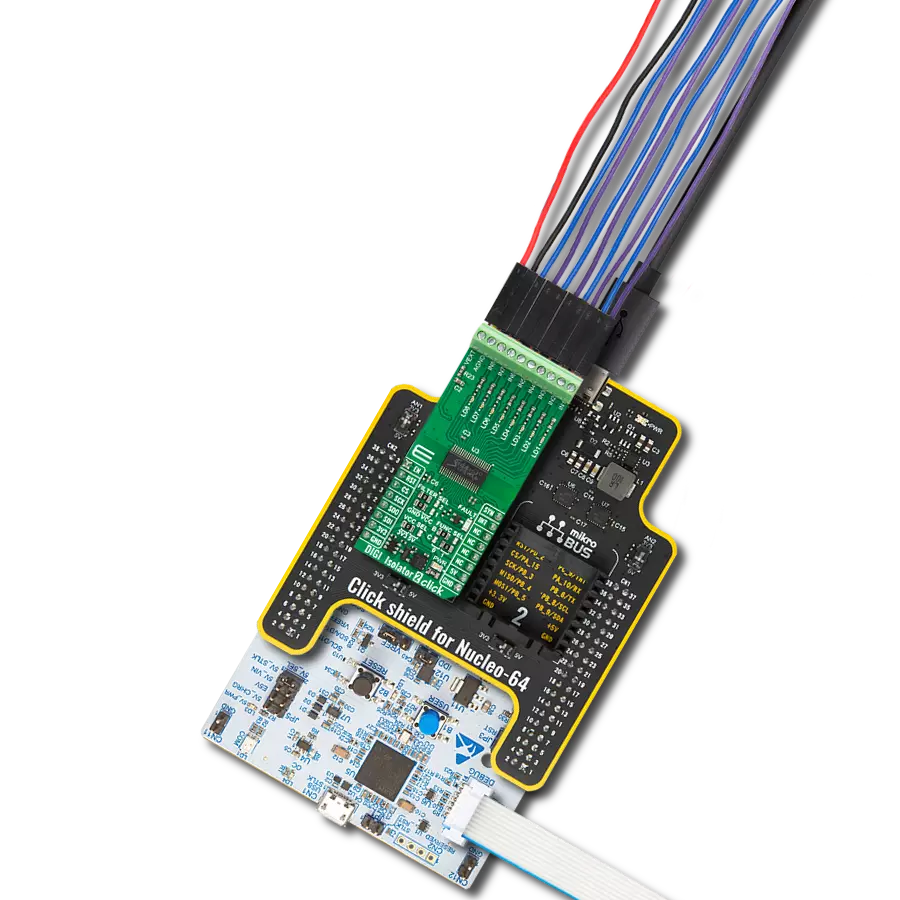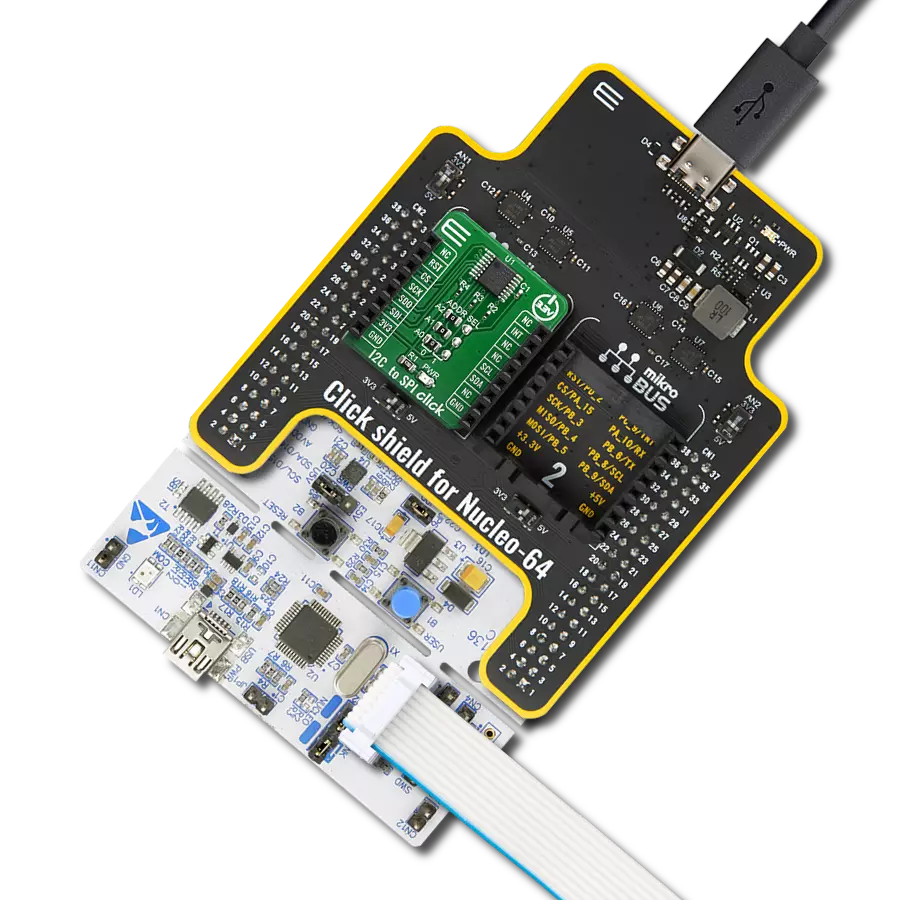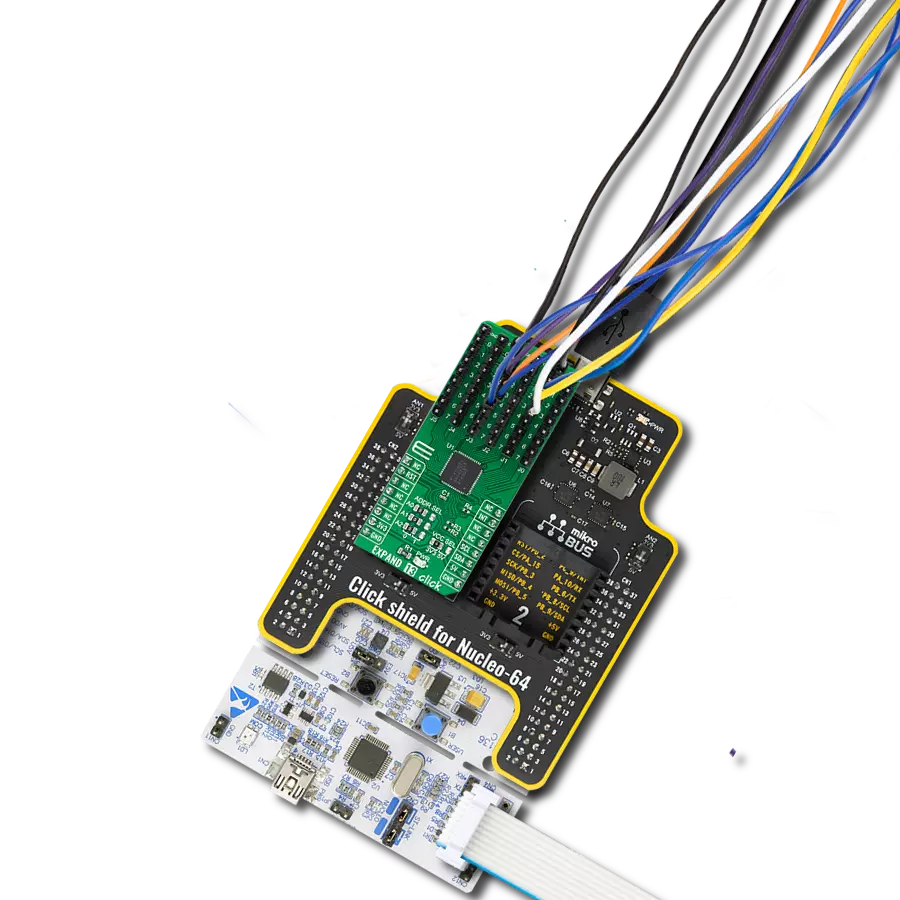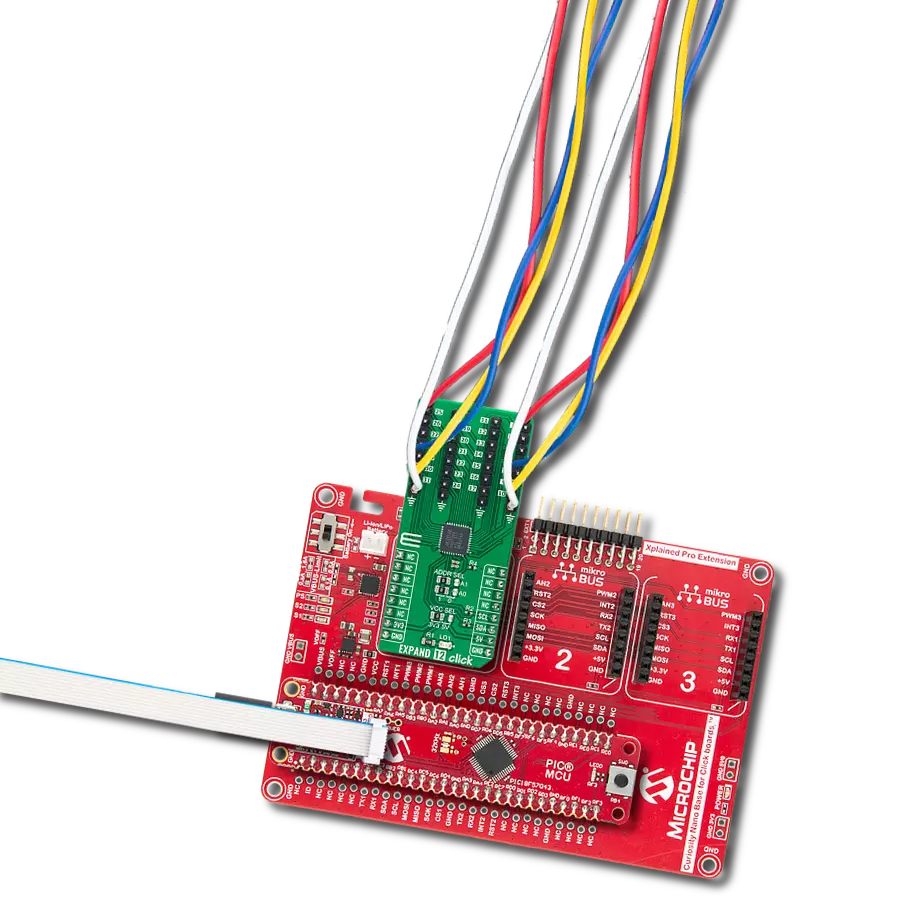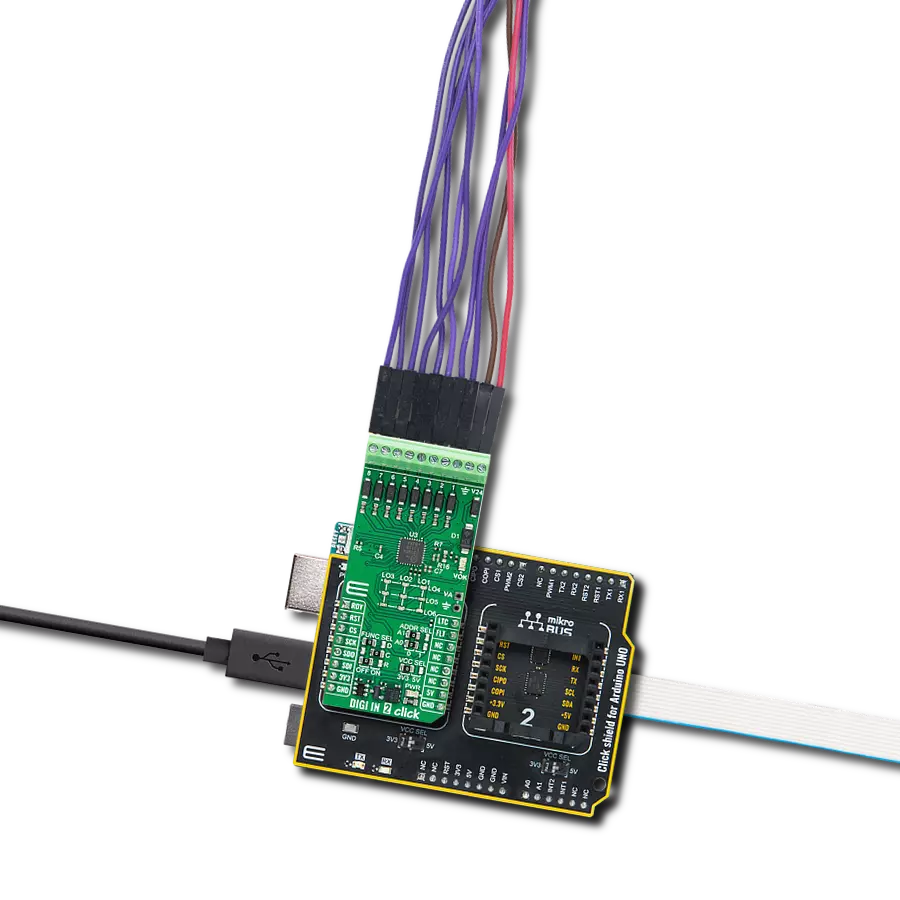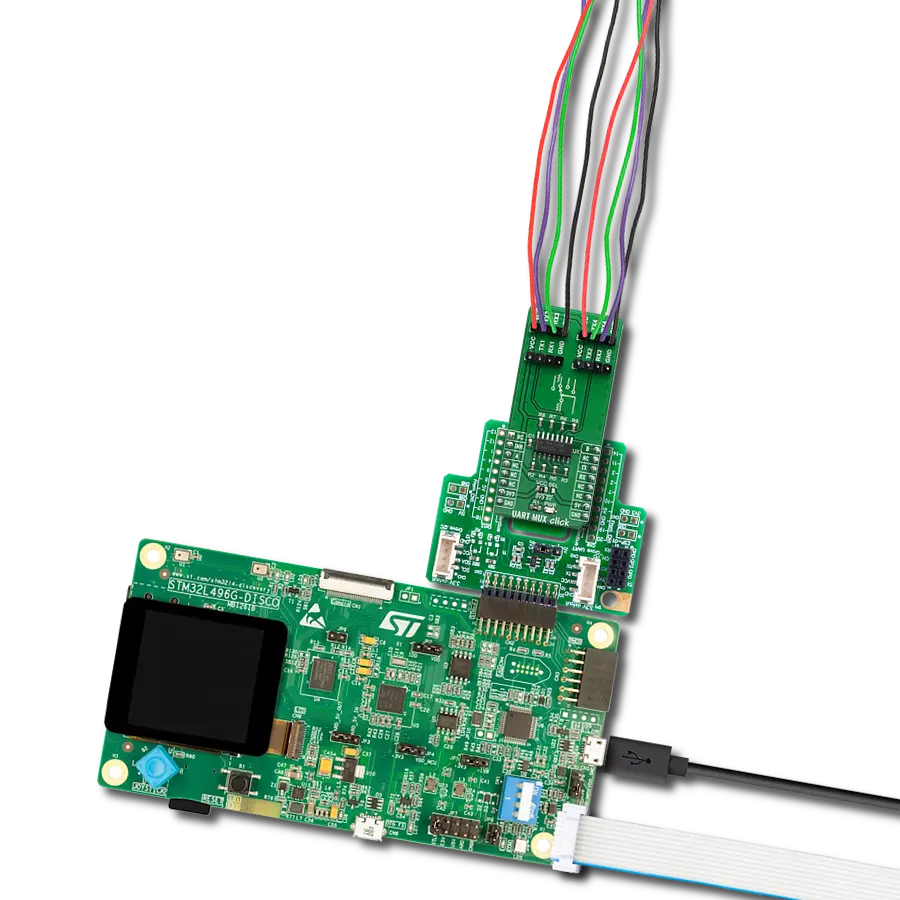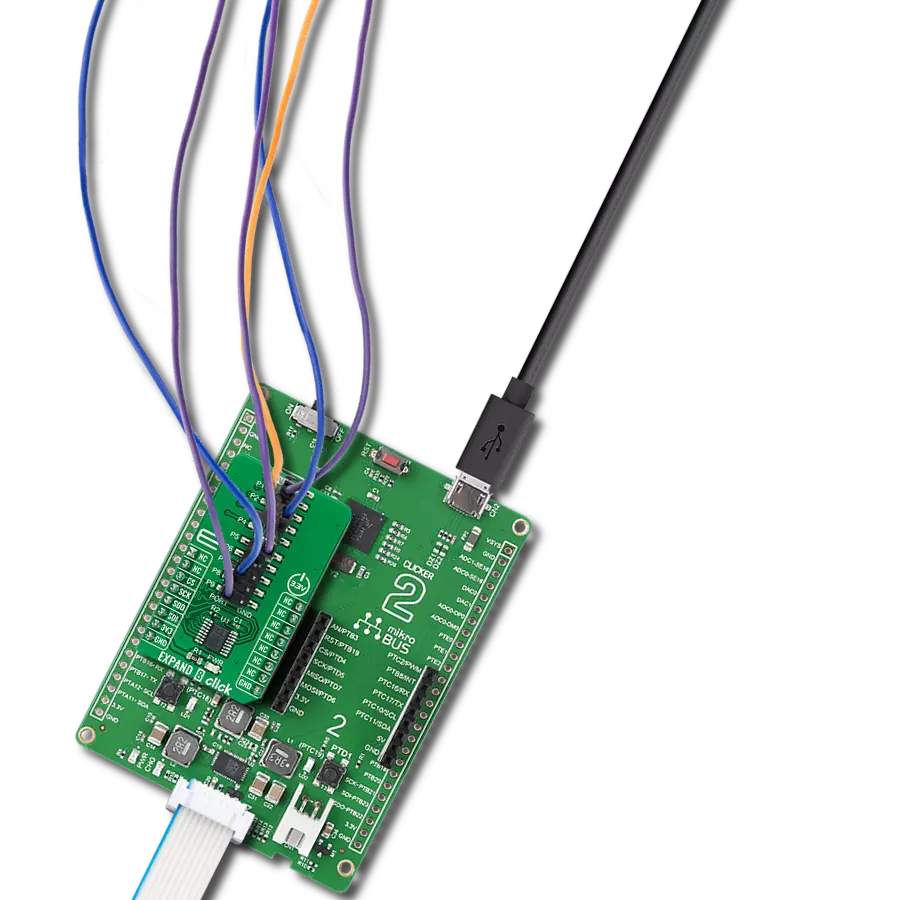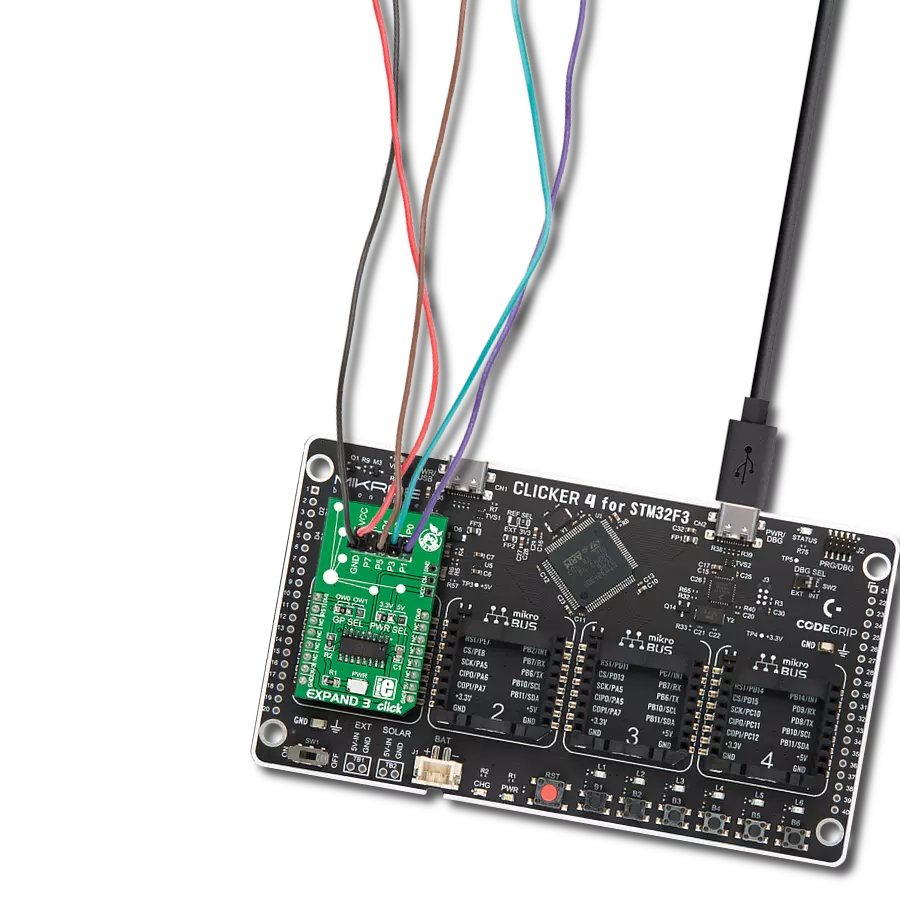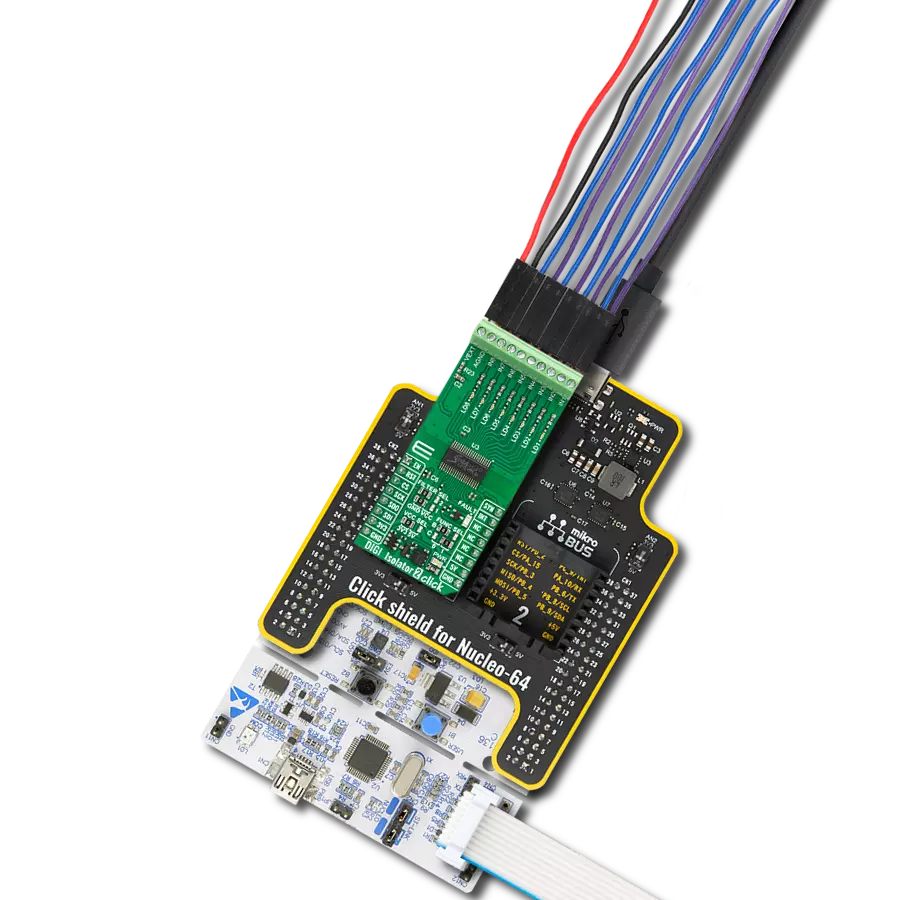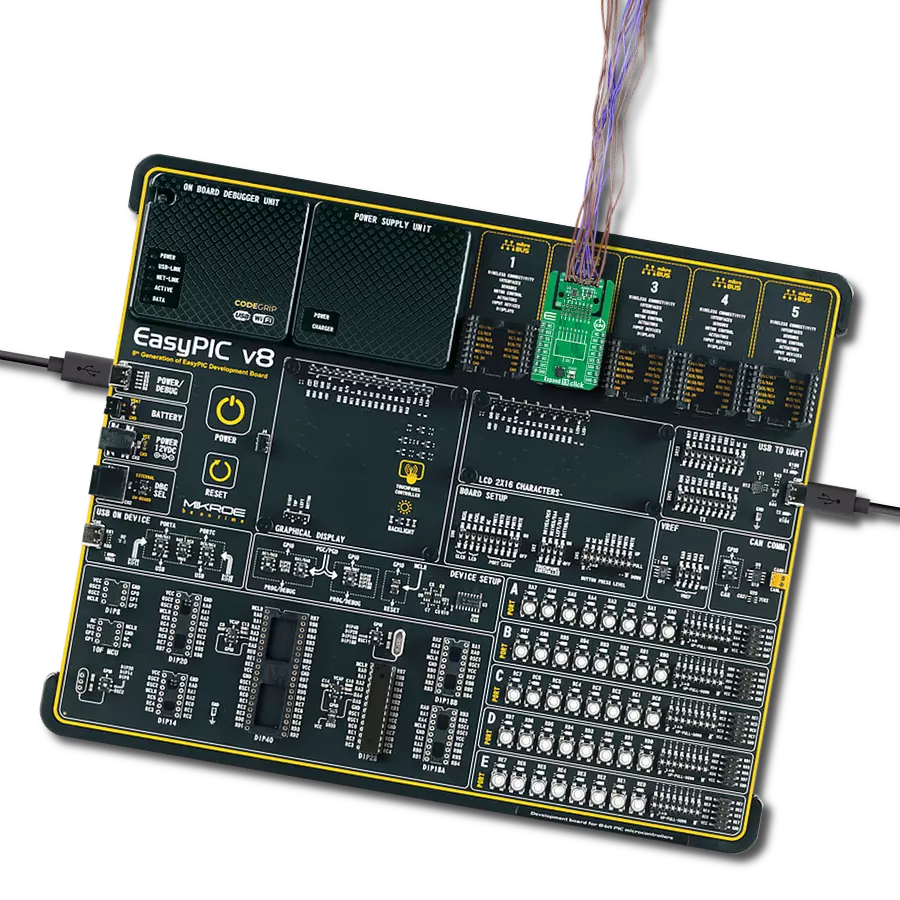Expand, connect, conquer - with our game-changing general-purpose I/O expander
A
A
Hardware Overview
How does it work?
Expand 2 Click is based on the MCP23017, a 16-bit general purpose parallel I/O expansion for I2C bus from Microchip. The MCP23017 consists of multiple 8-bit configuration registers for input, output, and polarity selection. The host MCU can enable the I/Os as either inputs or outputs by writing the I/O configuration bits with data for each input or output kept in the corresponding input or output register. This port expander represents a simple solution when additional I/Os are needed while keeping interconnections to a minimum. This Click board™ communicates with MCU using the standard I2C 2-Wire interface with a maximum clock frequency of 1.7MHz. The MCP23017 has a
7-bit I2C address with the first four MSBs fixed to 0100. The address pins A0, A1, and A2 are programmed by the user and determine the value of the last three LSBs of the slave address, which can be selected by positioning onboard SMD jumpers labeled as ADDR SEL to an appropriate position marked as 1 or 0. This way, the MCP23017 provides the opportunity of the 64 possible different I2C addresses by positioning the SMD jumper to an appropriate position. Besides, it also features an interrupt feature, routed to the INT pin of the mikroBUS™ socket, indicating to the host controller that an input state has been changed. Two interrupt pins on the MCP23017 can be
associated with their respective ports or logically OR’ed together so that both pins will activate if either port causes an interrupt. The desired interrupt can be selected by positioning an onboard SMD jumper labeled INT SEL to an appropriate position. This Click board™ can operate with either 3.3V or 5V logic voltage levels selected via the PWR SEL jumper. This way, it is allowed for both 3.3V and 5V capable MCUs to use the communication lines properly. However, the Click board™ comes equipped with a library containing easy-to-use functions and an example code that can be used, as a reference, for further development.
Features overview
Development board
Arduino UNO is a versatile microcontroller board built around the ATmega328P chip. It offers extensive connectivity options for various projects, featuring 14 digital input/output pins, six of which are PWM-capable, along with six analog inputs. Its core components include a 16MHz ceramic resonator, a USB connection, a power jack, an
ICSP header, and a reset button, providing everything necessary to power and program the board. The Uno is ready to go, whether connected to a computer via USB or powered by an AC-to-DC adapter or battery. As the first USB Arduino board, it serves as the benchmark for the Arduino platform, with "Uno" symbolizing its status as the
first in a series. This name choice, meaning "one" in Italian, commemorates the launch of Arduino Software (IDE) 1.0. Initially introduced alongside version 1.0 of the Arduino Software (IDE), the Uno has since become the foundational model for subsequent Arduino releases, embodying the platform's evolution.
Microcontroller Overview
MCU Card / MCU
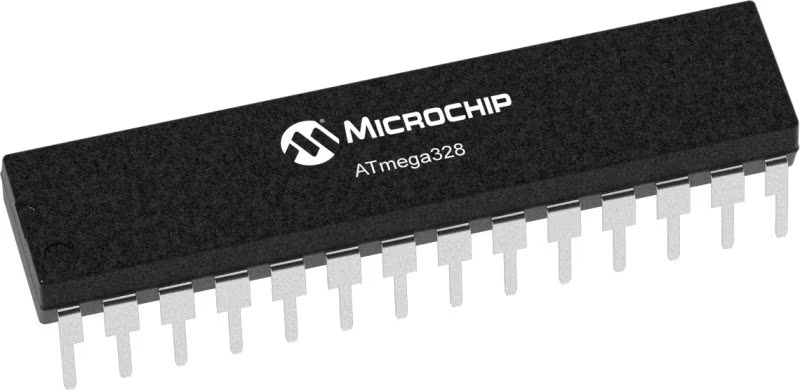
Architecture
AVR
MCU Memory (KB)
32
Silicon Vendor
Microchip
Pin count
32
RAM (Bytes)
2048
You complete me!
Accessories
Click Shield for Arduino UNO has two proprietary mikroBUS™ sockets, allowing all the Click board™ devices to be interfaced with the Arduino UNO board without effort. The Arduino Uno, a microcontroller board based on the ATmega328P, provides an affordable and flexible way for users to try out new concepts and build prototypes with the ATmega328P microcontroller from various combinations of performance, power consumption, and features. The Arduino Uno has 14 digital input/output pins (of which six can be used as PWM outputs), six analog inputs, a 16 MHz ceramic resonator (CSTCE16M0V53-R0), a USB connection, a power jack, an ICSP header, and reset button. Most of the ATmega328P microcontroller pins are brought to the IO pins on the left and right edge of the board, which are then connected to two existing mikroBUS™ sockets. This Click Shield also has several switches that perform functions such as selecting the logic levels of analog signals on mikroBUS™ sockets and selecting logic voltage levels of the mikroBUS™ sockets themselves. Besides, the user is offered the possibility of using any Click board™ with the help of existing bidirectional level-shifting voltage translators, regardless of whether the Click board™ operates at a 3.3V or 5V logic voltage level. Once you connect the Arduino UNO board with our Click Shield for Arduino UNO, you can access hundreds of Click boards™, working with 3.3V or 5V logic voltage levels.
Used MCU Pins
mikroBUS™ mapper
Take a closer look
Click board™ Schematic

Step by step
Project assembly
Software Support
Library Description
This library contains API for Expand 2 Click driver.
Key functions:
expand2_set_bit_port_a- Function set bit to 8-bit register address from PORTA of MCP23017 chipexpand2_toggle_bit_port_a- Function toggle bit from 8-bit register address from PORTA of MCP23017 chipexpand2_clear_bit_port_a- Function clear bit from 8-bit register address from PORTA of MCP23017 chip
Open Source
Code example
The complete application code and a ready-to-use project are available through the NECTO Studio Package Manager for direct installation in the NECTO Studio. The application code can also be found on the MIKROE GitHub account.
/*!
* \file
* \brief Expand2 Click example
*
* # Description
* This application demonstrates the use of the Expand 2 Click board.
*
* The demo application is composed of two sections :
*
* ## Application Init
* Initializes the driver and logger, and then sets the Click
* default configuration: PORTA as output, PORTB as input with pull-ups on all pins.
*
* ## Application Task
* Sets other pin of PORTA every 3 seconds, then reads and displays the status of
* both ports on USB UART.
*
* \author MikroE Team
*
*/
// ------------------------------------------------------------------- INCLUDES
#include "board.h"
#include "log.h"
#include "expand2.h"
// ------------------------------------------------------------------ VARIABLES
static expand2_t expand2;
static log_t logger;
// ------------------------------------------------------ APPLICATION FUNCTIONS
void application_init ( void )
{
log_cfg_t log_cfg;
expand2_cfg_t cfg;
/**
* Logger initialization.
* Default baud rate: 115200
* Default log level: LOG_LEVEL_DEBUG
* @note If USB_UART_RX and USB_UART_TX
* are defined as HAL_PIN_NC, you will
* need to define them manually for log to work.
* See @b LOG_MAP_USB_UART macro definition for detailed explanation.
*/
LOG_MAP_USB_UART( log_cfg );
log_init( &logger, &log_cfg );
log_info( &logger, "---- Application Init ----" );
// Click initialization.
expand2_cfg_setup( &cfg );
EXPAND2_MAP_MIKROBUS( cfg, MIKROBUS_1 );
expand2_init( &expand2, &cfg );
expand2_default_cfg ( &expand2 );
log_printf( &logger, "----------------\r\n" );
log_printf( &logger, " Expand 2 Click \r\n" );
log_printf( &logger, "----------------\r\n" );
Delay_ms ( 100 );
}
void application_task ( void )
{
// Task implementation.
uint8_t port_status;
uint8_t pin_position;
for ( pin_position = 0; pin_position < 8; pin_position++ )
{
expand2_set_port_a( &expand2, EXPAND2_I2C_MODULE_ADDRESS_0, pin_position );
port_status = expand2_read_port_a( &expand2, EXPAND2_I2C_MODULE_ADDRESS_0 );
log_printf( &logger, " Status PA (output): %d\r\n", (uint16_t) port_status );
port_status = expand2_read_port_b( &expand2, EXPAND2_I2C_MODULE_ADDRESS_0 );
log_printf( &logger, " Status PB (input) : %d \r\n", (uint16_t) port_status );
log_printf( &logger, "----------------\r\n" );
Delay_ms ( 1000 );
Delay_ms ( 1000 );
Delay_ms ( 1000 );
}
}
int main ( void )
{
/* Do not remove this line or clock might not be set correctly. */
#ifdef PREINIT_SUPPORTED
preinit();
#endif
application_init( );
for ( ; ; )
{
application_task( );
}
return 0;
}
// ------------------------------------------------------------------------ END
Additional Support
Resources
Category:Port expander




















